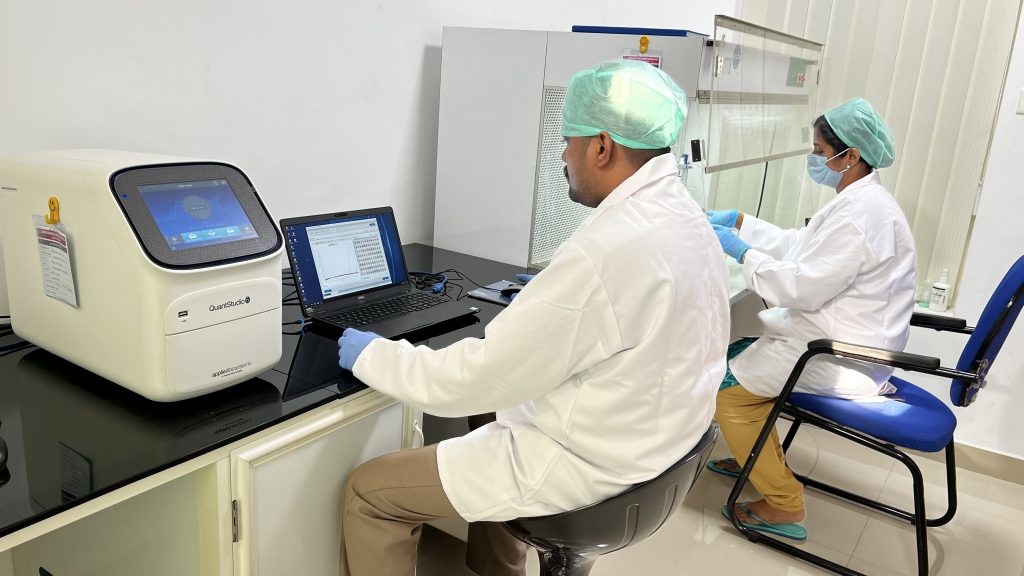Centre for Applied Livestock Genomics
KLDB – CALG
The Centre for Applied Livestock Genomic Laboratory (CALG), Kudappanakkunnu was established in 2016 under Kerala Livestock Development Board Thiruvananthapuram. The laboratory have well established Building structure for different activities like Sample reception, DNA isolation,PCR works, Post PCR works, Karyotyping ,Genotyping ,DNA storage and Bioinformatics room.

General objectives
- Genomic selection is producing profound changes in dairy cattle market since reliable breeding values, which double the reliability of the pedigree index, can be obtained much earlier in an animal’s life. As a result, genetic gains of properly designed genomic programs are considerably larger than genetic gains obtained with traditional approaches.
- Improving the breeding standards of the animals and thereby realizing a faster gain and growth rate in milk production of the State.
- Establish the ability and capability of the livestock sector in the State to utilise this technology.
- Develop national and international collaboration in the field of genomics for animal breeding applications in the State.
Specific objectives
- Enable early selection of bull calves based on genomic data, by employing genetic selection in primary selected young bulls before distributing its semen.
- Check the entry of bulls with undesirable genetic combination for milk production, thereby assuring desirable genetic constitution of the future dairy cattle.
- Publication of Estimated Breeding Value (EBV) based on pedigree and DNA sequence information of all young bulls prior to large-scale use for Artificial Insemination (AI).
- Reduce the cost of rearing of male calves to produce required number of AI bulls and proven sires
- Reduce the generation interval considerably thereby increasing annual genetic gain
- Increase the accuracy of selection by increasing the number of daughters per sire
- Increase the intensity of selection by reducing the proportion of superior male calves selected
- Reduce the rate of inbreeding by employing genome scanning and by implementing systematic breeding programme. (It can identify the parents with complementary DNA profiles.)
- Selection of replacement bull mothers with desirable gene combination at DNA level in the bull mother farm and elite cows in the progeny testing area
- Screening of carriers of genetic diseases in the breeding herd
- Parentage testing and DNA finger printing
- Trace animals or animal products
- Species identification of tissues of animal origin
- The infrastructure in the laboratory can be spared for vetero-legal and forensic aspects
- The laboratory will act as referral laboratory for Southern states to carry out screening of the genetic diseases of frozen semen stations

